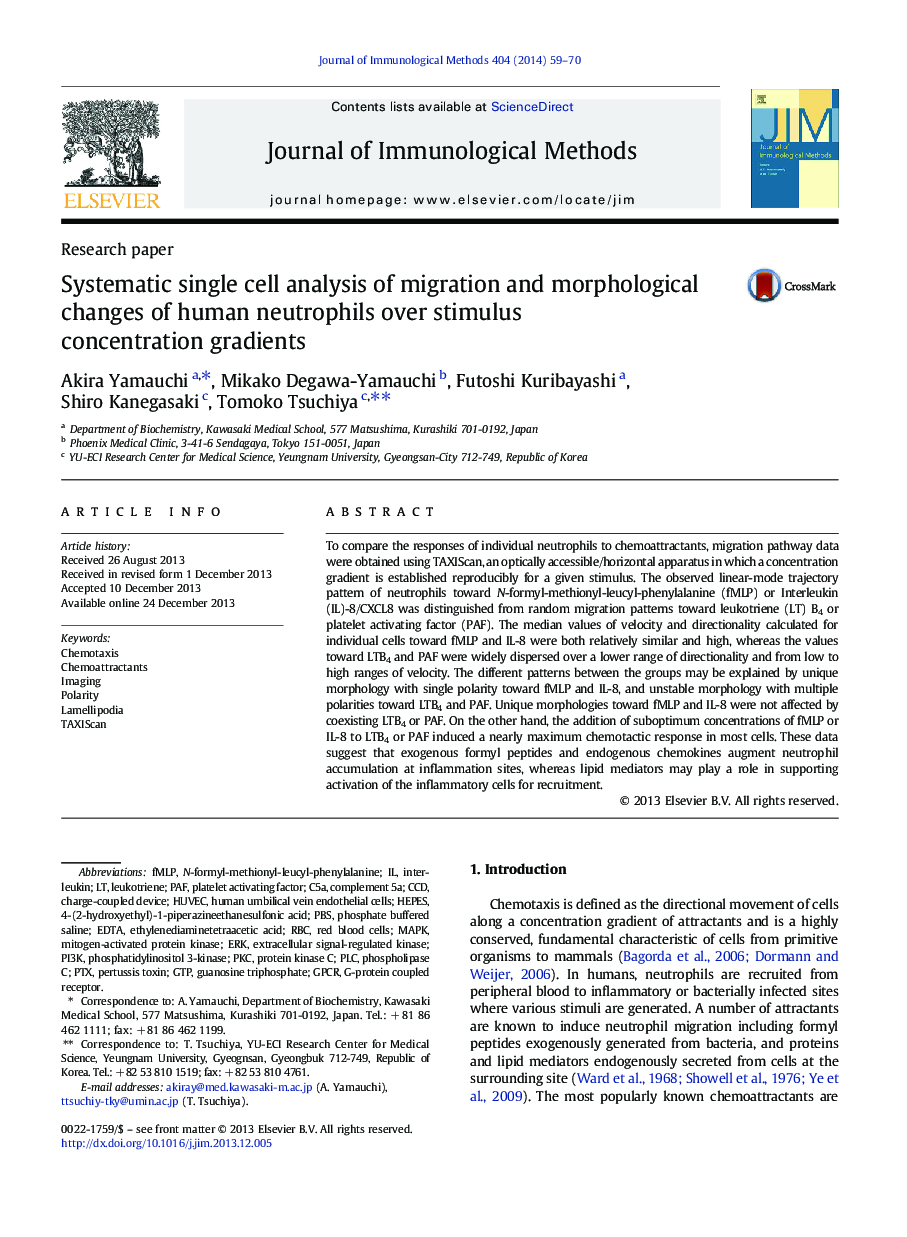| کد مقاله | کد نشریه | سال انتشار | مقاله انگلیسی | نسخه تمام متن |
|---|---|---|---|---|
| 2088229 | 1545705 | 2014 | 12 صفحه PDF | دانلود رایگان |
• Cell-based, statistical analysis of neutrophil migration behavior made possible
• Linear-mode trajectory toward fMLP/CXCL8 explained by single polarity of cells
• Neutrophils response to fMLP better than to CXCL8 as a population.
• Lipid mediators induce dispersed cell directionality with multiple leading edges.
• Lipid-enhanced chemotaxis toward sub-optimum concentrations of fMLP or CXCL8
To compare the responses of individual neutrophils to chemoattractants, migration pathway data were obtained using TAXIScan, an optically accessible/horizontal apparatus in which a concentration gradient is established reproducibly for a given stimulus. The observed linear-mode trajectory pattern of neutrophils toward N-formyl-methionyl-leucyl-phenylalanine (fMLP) or Interleukin (IL)-8/CXCL8 was distinguished from random migration patterns toward leukotriene (LT) B4 or platelet activating factor (PAF). The median values of velocity and directionality calculated for individual cells toward fMLP and IL-8 were both relatively similar and high, whereas the values toward LTB4 and PAF were widely dispersed over a lower range of directionality and from low to high ranges of velocity. The different patterns between the groups may be explained by unique morphology with single polarity toward fMLP and IL-8, and unstable morphology with multiple polarities toward LTB4 and PAF. Unique morphologies toward fMLP and IL-8 were not affected by coexisting LTB4 or PAF. On the other hand, the addition of suboptimum concentrations of fMLP or IL-8 to LTB4 or PAF induced a nearly maximum chemotactic response in most cells. These data suggest that exogenous formyl peptides and endogenous chemokines augment neutrophil accumulation at inflammation sites, whereas lipid mediators may play a role in supporting activation of the inflammatory cells for recruitment.
Journal: Journal of Immunological Methods - Volume 404, February 2014, Pages 59–70
